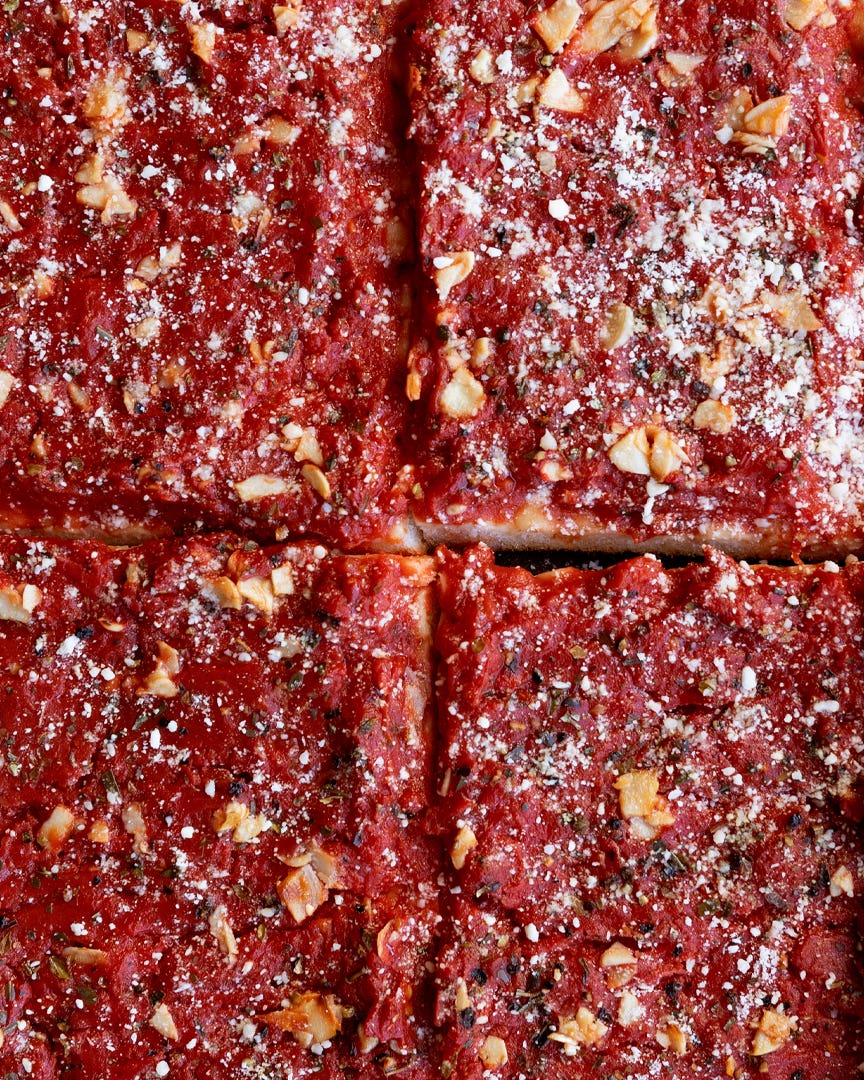Your Backyard Grill Can Cook a Lot More Than You Think
It’s not just for steak dinners. With these simple tips, you can easily infuse smoky flavor into breakfast, dessert, and everything in between.
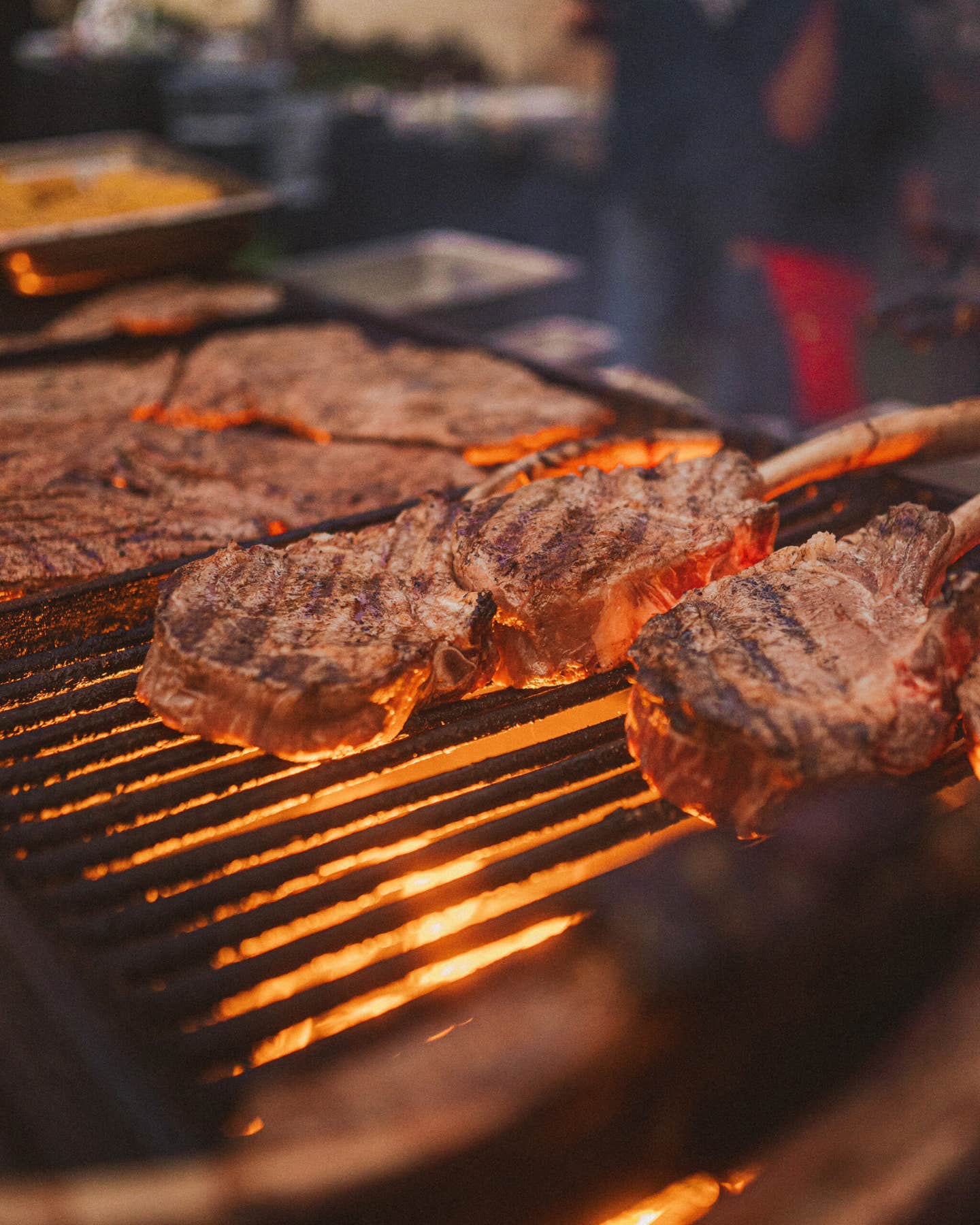
Growing up, I always considered backyard grilling a special-occasion activity—reserved for warm-weather long weekends like Memorial Day or the Fourth of July. My parents would invite friends around and dust off our Weber; then we’d marinate drumsticks, ribs, and vegetable skewers and prepare appetizers and drinks before spending the day shepherding platters from the indoor kitchen to the grill to the backyard table. I always loved our cookout days, even though there was a lot of going back and forth between the indoors and outdoors, and not a lot of sitting down to enjoy the summer air.
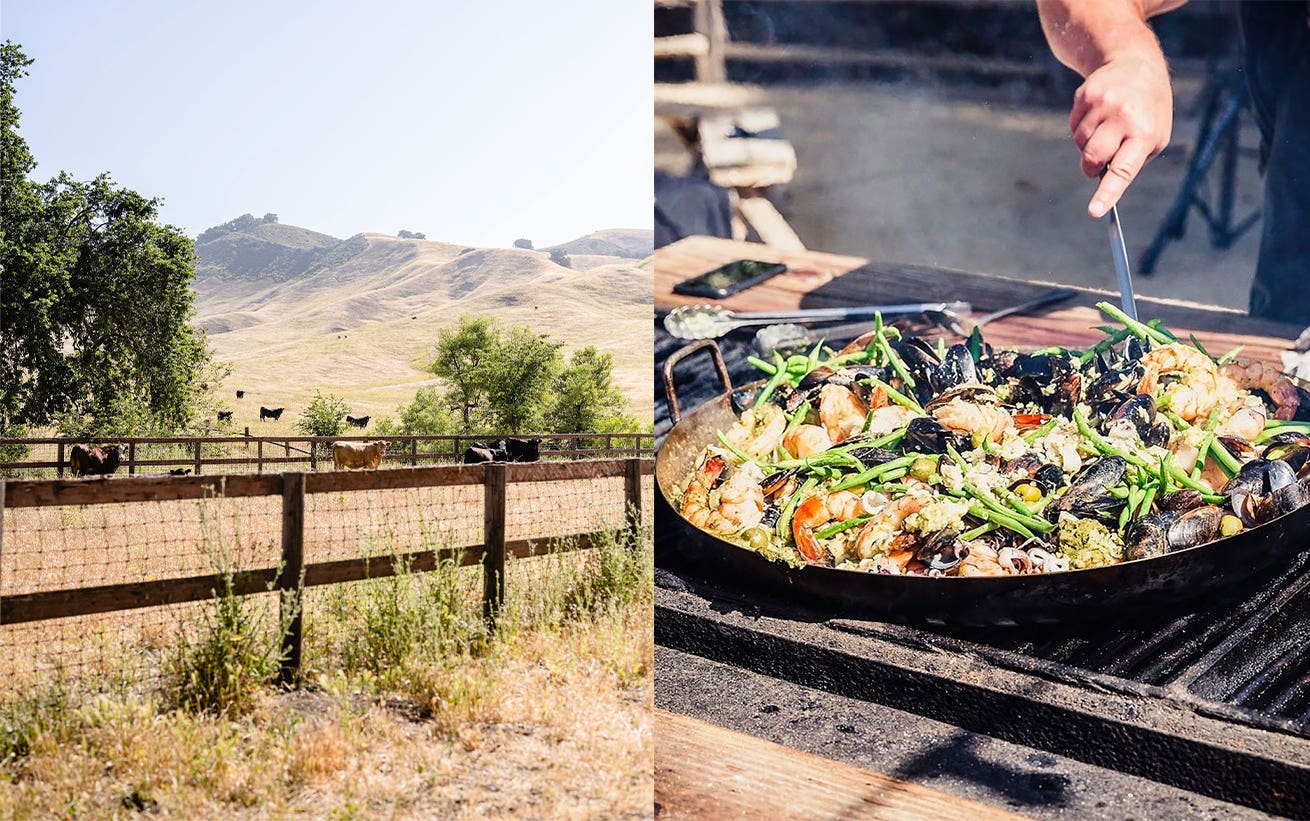
Recently, I took a road trip from my parents’ house in Northern California down to the Santa Ynez Valley, home to the 10,000-acre Alisal Ranch. In addition to raising horses and maintaining its lakes and golf courses, the ranch hosts “BBQ Bootcamp” events a few times a year, when pitmasters from around the country convene to demonstrate tips and best practices for amateur grillers. As chefs walked us through easy techniques for cooking all kinds of foods, from pizza to puddings, I began to realize that a grill is a far more versatile and forgiving tool than most of us might think. Perhaps using one doesn’t have to be a labor-intensive, all-day affair either, and, with the optimal tools and ingredients, maybe it doesn’t have to be relegated to holiday weekends, or even to dinnertime. “Look at your grill as an outdoor range,” Valerie Gordon, the chef behind Valerie Confections in Los Angeles, told us. “It's not just steak, ribs, and potatoes. Just about everything can be cooked on the grill.”
“When I’m inside cooking, I’ve got my back to my family,” said Paula Disbrowe, author of the grilling cookbook Thank You for Smoking. Outside, on the other hand, the grill is the center of the entertainment, the hearth around which everyone gathers. For making the most of our backyard grates and cooking outside with ease, here are some of my top takeaways from grilling camp.
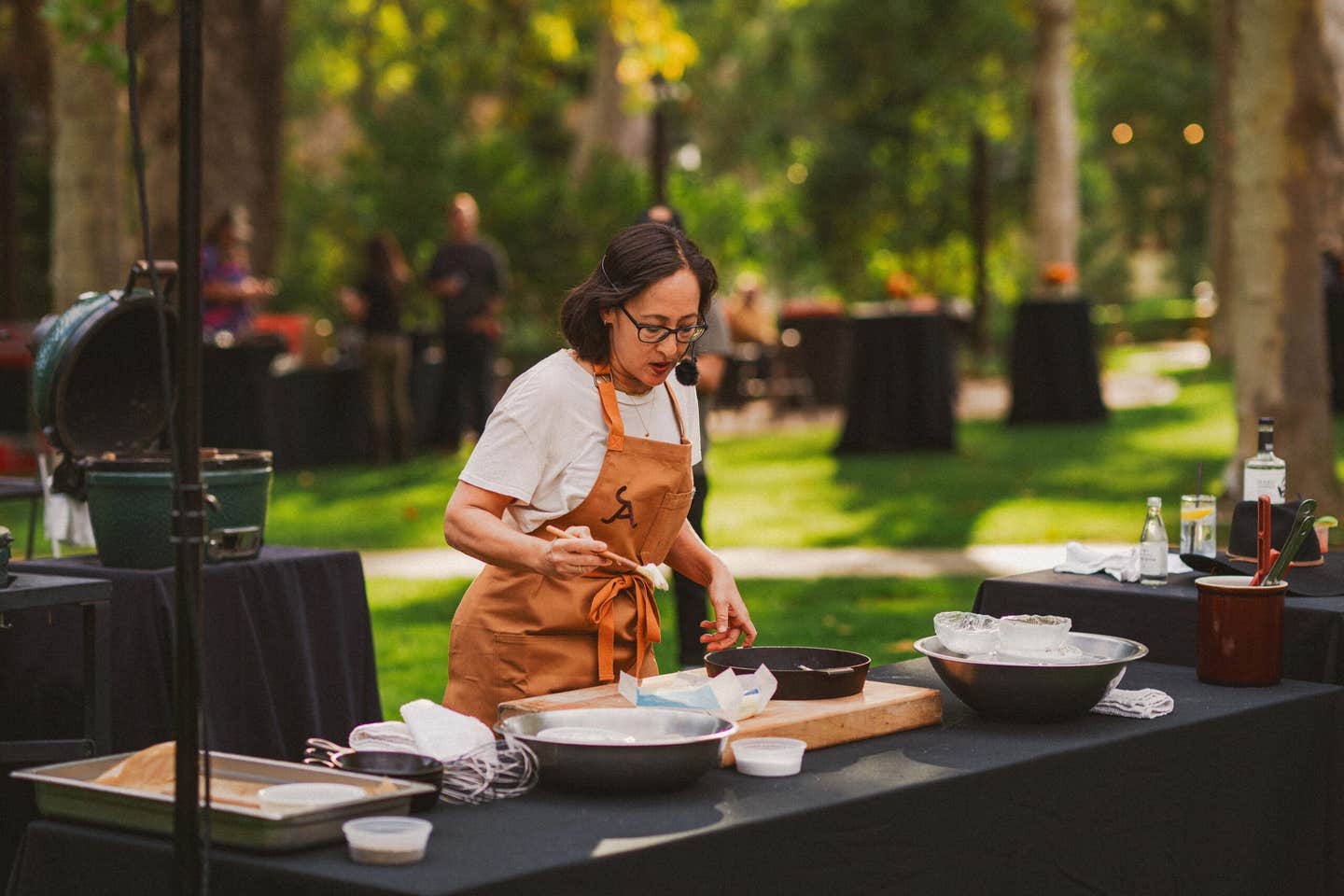
Break out the cast-iron skillet. A well-seasoned cast-iron vessel is a practically indestructible cooking tool that’s nonstick to boot. With one of these versatile skillets on the grates, you can make practically anything you’d make on an indoor stovetop—whether it’s scrambled eggs and French toast for breakfast, grilled-cheese sandwiches and shrimp skewers for lunch, or chicken thighs for meal prepping. “The bonus is the proteins absorb the wafting charcoal and wood smoke aromas, [yet] you retain all of the flavorful juices,” said Disbrowe. This means you can even grill dishes that require or produce a good deal of liquid, like a hearty paella or marinated vegetables.
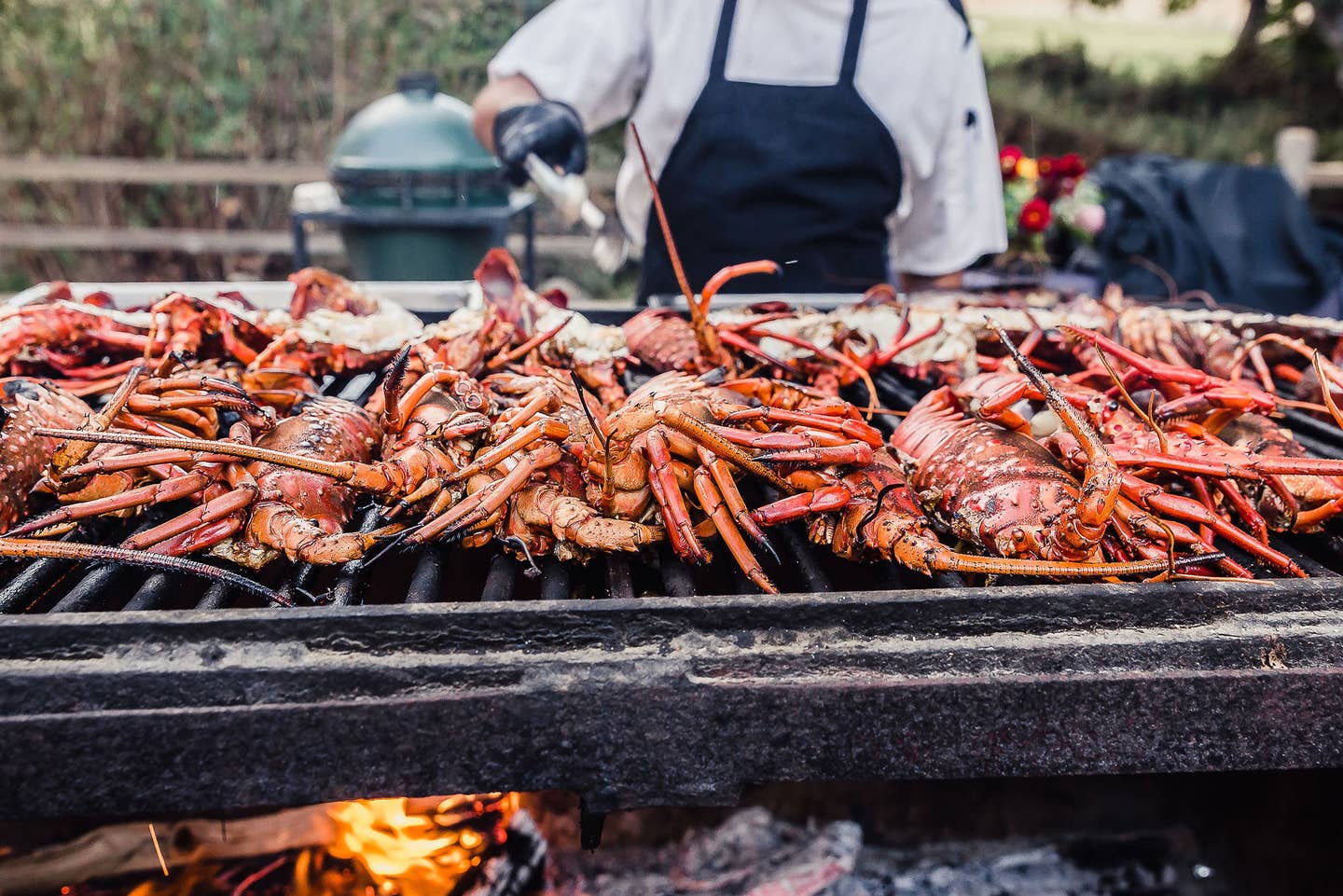
Add woody, herbaceous aromas. Different kinds of wood impart different flavors, so Riker recommends experimenting with a few varieties to find your preferred wood or combination of various types. “Mesquite wood provides a strong smoky flavor, while fruitwoods like cherry or apple offer a milder, sweeter taste,” he explains, adding that his favorite is olive, which imparts a distinctly nutty essence. If you’re using a gas grill, you can still introduce the element of wood via a wood chip box. "Even a small amount of woodsmoke adds tremendous flavor,” advised Disbrowe, whose preferred woods are hickory and oak, both of which provide rich, intense aromas that pair especially well with red meat. Further heighten the flavor by adding fresh herbs directly to the grates: “I love to add sprigs of rosemary or even small stems of fresh bay leaves to the periphery of the fire, so they smolder more slowly,” Disbrowe noted.
Keep an all-purpose spice blend on hand. A simple spice mix is key to grilling efficiently for a crowd—it’s much easier to keep a single shaker on stand-by, rather than a whole line-up of spice jars. Take Santa Maria rub, for example, which is especially popular among tri-tip fans and typically includes salt, black pepper, and garlic powder (though some cooks like to incorporate additional flavors such as paprika, thyme, or cumin). The mild-flavored concoction can be sprinkled over eggs in the morning, rib-eye in the evening, and snacks in between.
Foil it up. Riker’s favorite foolproof technique for cooking delicate foods, like certain seafood and vegetables, is to seal them in packets of foil to keep the ingredients tender and moist. Add a splash of citrus juice and a sprinkling of spices and herbs first, and always crimp the edges of the packet tightly to keep everything contained. (Open it up carefully—nothing ruins a day of backyard fun like a nasty steam burn.) On that note, you should keep foil around anyway, as it’s handy for tenting cooked foods to keep them warm while they rest.
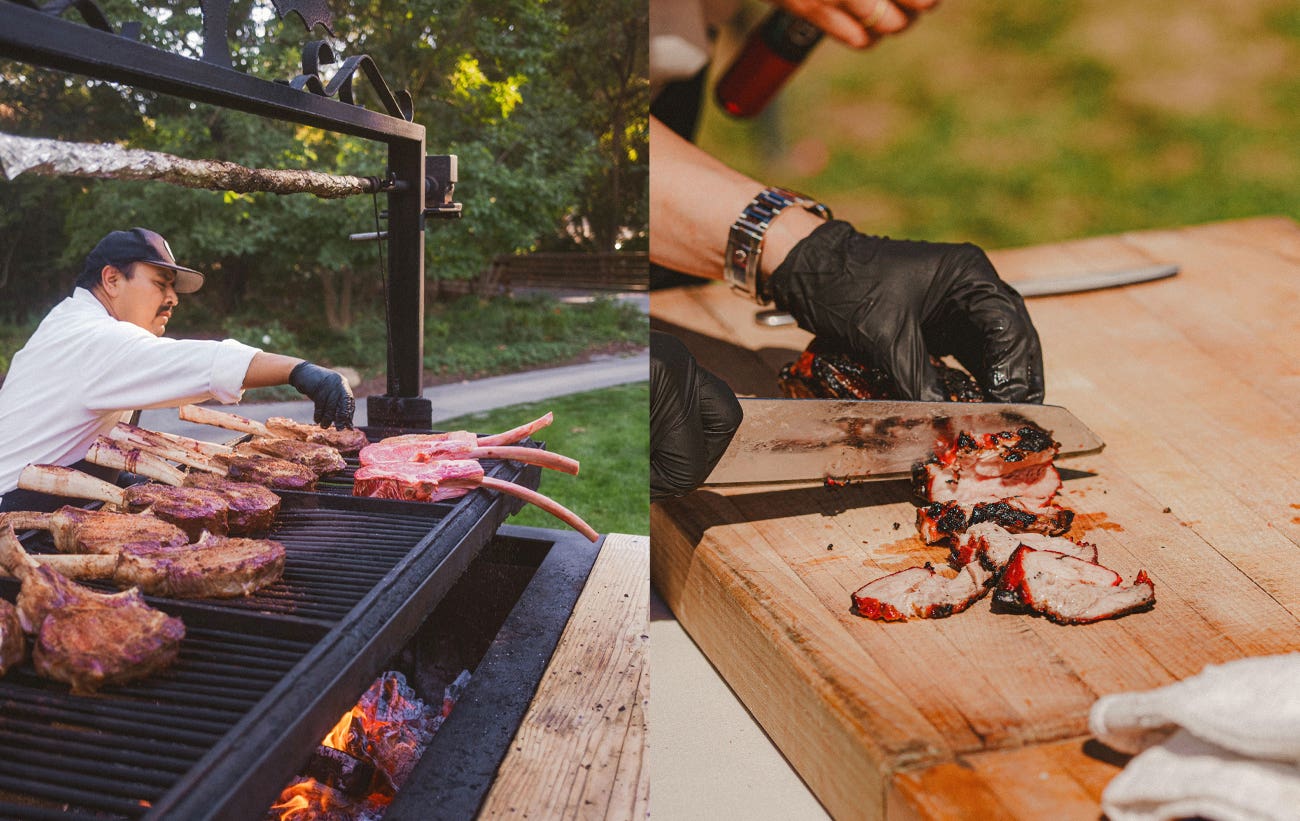
Cook big steaks to feed a crowd. Instead of grilling individual steaks one by one, get big cuts of meat and grill those, then slice them up for guests. “The secret to cooking this meat to perfection is to season it generously,” said Craig Riker, Alisal Ranch’s executive chef. Sprinkle the entire surface with kosher salt, then refrigerate, uncovered, for at least 30 minutes, or ideally overnight. When you’re ready to grill, let the meat come to room temperature; then, cook the steak over indirect heat, seeking out the cooler parts of the grates, which will promote more even cooking. When the meat is 8–10 degrees away from the desired temperature, move the steak to the hotter parts of the grates and sear for a couple of minutes on each side. Reverse-searing achieves that crisp, brown exterior while keeping the inside juicy and tender. While a tomahawk steak might sound intimidating, Riker promises it’s a great at-home option: “The marbled fat yields melt-in-your-mouth tenderness and a robust flavor,” he said—especially when paired with a rich, herbaceous chimichurri.
Intensify salads by grilling the ingredients first. Try introducing a smoky char to your vegetables before tossing them into a salad, and you might never go back. Sturdy ingredients like asparagus, bell peppers, mushrooms, okra, squash, and shallots all taste great after a kiss from the flame. Before adding the grilled veg to your raw greens, simply toss them with some fresh herbs, butter, and apple cider vinegar to create what Riker calls “a flavor explosion.” Or, keep it extra simple with a mere three ingredients: “A split romaine, grilled and finished with olive oil and salt, is hard to beat,” suggested Burt Bakman, the pitmaster behind the Los Angeles restaurant Slab Barbecue. And don’t rule out fruit—grilled watermelon salad with feta is another one of his go-to's.
Grill fruit to make spiked drinks. A brief rendezvous with heat can bring out the jamminess of sturdy fruits like pineapple and stone fruits. “Grilling peaches intensifies their sweetness,” said Riker, who recommends cooking the slices until they have char marks before adding them to a favorite sangria to the whole batch with subtle smoky flavor. (Drinks writer Leslie Pariseau aptly likens the aroma to “the comforting scent of an early evening campfire.”) Alternatively, muddle the grilled fruit with syrup and citrus juice, then shake it in with ice and your liquor of choice to make an icy, slurpable cocktail.
Make boats out of sturdy fruits and vegetables. Nothing’s more fun than an edible bowl, especially for kids, so turn ingredients into boats and fill them with tasty toppings. Riker recommends grilling a few halved, pitted avocados flesh-side down, then topping them with spicy salsa and cotija cheese for a creamy appetizer or side dish. Or, spoon the seeds out of a halved zucchini or eggplant before filling them with cheese and herbs and giving them a blast of heat for a craveable cheese pull. For dessert, try caramelizing halved, pitted peaches, then filling them with whipped cream or mascarpone and sprinkling with cinnamon sugar and granola—an entertaining spin on a peach crisp. The cooking and assembly all happen outside, and guests can top their boats to their liking.
Go ahead, make a pizza. It’s totally feasible—or, dare we say, easy—to make a pizza using your grill. First, stretch out the dough and give it a light sprinkle of flour. “Just a dusting will help prevent the pizza from sticking onto the peel and becoming a calzone,” noted Brendan Smith, co-owner of the Santa Barbara pizzeria Bettina. Place it directly on the grates and par-cook it on both sides; then, when you’re ready to eat, top it with sauce and other add-ons and give it a final grill. According to Smith’s co-owner Rachel Greenspan, if you opt for meats like sausage, they can be placed onto the crust raw: “The fat seeps out as it cooks,” she pointed out. Eggs are also a fun addition, especially for breakfast: use cheese to build a small well in the center of the pizza, then crack in a raw egg for a delectably oozy yolk. Smith also encourages home pizzaiolos to get creative with seasonal veg combinations: during spring, Tutti Frutti peas and mint pesto make a refreshing pair, while in the summer, the pizzeria always makes a peach-and-poblano-pepper pie. Don’t have pizza dough on hand? Swap in flatbreads or pitas for a time-saving alternative.
Make melty, custardy treats. Desserts made from liquidy, quick-cooking batters are great candidates for the grill—think a skillet chocolate-chip cookie, fudgy blondies, and sticky toffee pudding. (Dense batters with a long cook time, like pound cake, won’t perform as well). Make sure to grease any skillet using a pastry brush, and “you will get a crispy edge like you’ve never had in your life,” Gordon promised. “Throw the batter on the grill while you're eating dinner, and as soon as you're done eating, dessert is ready.”
Keep Reading
Continue to Next Story


